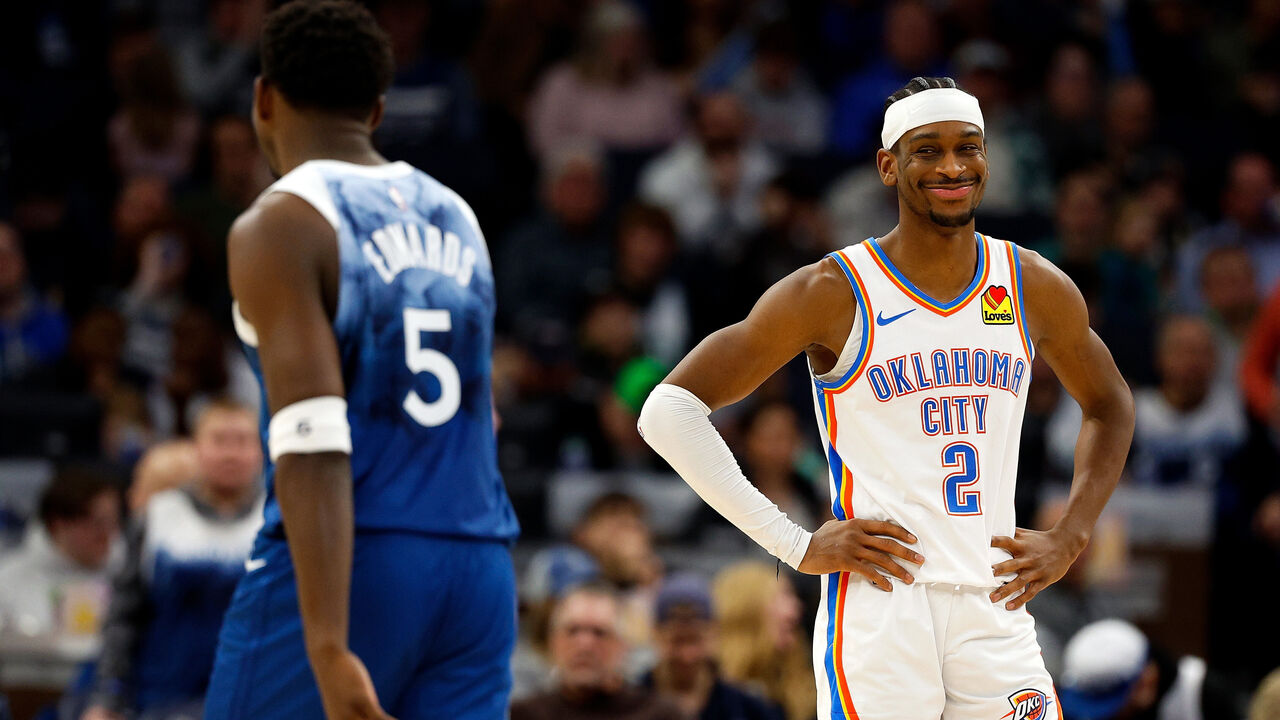Welcome to the NBA's age of parity
After 79 years, the NBA is experiencing a level of championship parity never before seen in its history.
The new benchmark was set when the Oklahoma City Thunder eliminated the 2023 champion Denver Nuggets in Game 7 of their Western Conference semifinal, ensuring that the 2025 postseason will crown a seventh different champion in as many years. To put that in perspective, seven franchises won 77% of the previous 70 titles. In fact, the league had only seen six different champions in a six-year span just once before (1975-1980).
NBA final four teams and their last championship:
— Keith Smith (@KeithSmithNBA) May 18, 2025
New York Knicks: 1973
Indiana Pacers: Never
Minnesota Timberwolves: Never
Oklahoma City Thunder: Never*
* won in 1979 as Seattle SuperSonics but Thunder do not hang a banner nor claim this title as their own.
There will always be a standard of excellence that championship teams must measure up to. Last year's Celtics were a 64-win buzz saw, while this year's odds-on favorite, the Thunder, won 68 games, posted the best point differential ever, and are only getting started. But beyond just the variety of champions, what's setting the modern Association apart from any time in recent memory is that it now feels like good teams, not just historically great ones, have a chance come playoff time.
For the first time in many fans' lives, there's a genuine belief that a well-built squad just needs to get into the dance to have a shot at immortality. We've long come to accept that as a rite of spring in the NHL (and a rite of autumn in Major League Baseball), but it's a healthy change for the NBA, even if it devalues the regular season (and postseason seeding) on some level.
To truly appreciate how the playoffs have evolved in recent years, consider how our expectations of conference finalists have changed. Over the last five seasons (2021-2025), the 20 conference finalists have recorded win totals ranging from 43 to 68, averaging 52.6 victories per 82 games (with win total prorated for the shortened 2020-21 campaign). During this half-decade, all eight postseason seeds have been represented in a conference final at least once, with five conference finalists - a quarter of the sample - registering less than 50 wins.
Compare that to the previous five years (2016-2020). Those 20 conference finalists ranged from 49-win clubs to 73-win record-breakers, averaging 57 wins per 82 outings. During that stretch, only top-five teams from their respective conferences made it to the final four, with 18 of the 20 finishing in the top three.
| Conf. finalists | 2016-2020 | 2021-2025 |
|---|---|---|
| Win range | 49-73 | 43-68 |
| Avg W/82 | 57 | 52.6 |
| Sub-50 W teams | 1 | 5 |
| Seeds | 1-5 | 1-8 |
There's a worthy debate about whether this is a good development. The last time the NBA went this long without a seemingly unbeatable juggernaut or two, the Finals were broadcast on tape delay. It took a decade-long rivalry between Magic Johnson's Lakers and Larry Bird's Celtics, followed by years of dominance by Michael Jordan's Bulls, to "save" the Association. The 21st century then gave way to more mini dynasties and superteams to slay in Los Angeles, San Antonio, Miami, and Golden State.
While there's no proof of concept for parity helping the NBA thrive, that doesn't mean it won't. For one, the league, the media, and the sports world have changed drastically in the half century since the last time the championship picture was this wide open. The NBA is just months away from beginning to reap the benefits of a new 11-year, $76-billion media rights deal with Disney, NBC, and Amazon.
Plus, the league's most successful periods of one- or two-team dominance were as much about the stars leading those dynasties as they were about the teams' perennial success. And there are plenty of worthy characters ready to carry the baton into this next leg of league history, whether it be Victor Wembanyama, Luka Doncic, or the two superstars who will square off in the Western Conference final, MVP front-runner Shai Gilgeous-Alexander and Timberwolves savior Anthony Edwards.

There are fresh faces contesting the title race each year, more teams and fan bases who can dream of hoisting the Larry O'Brien Trophy when a new season tips off, and unfathomable sums of money rolling in. It's an exciting, refreshing time that fans and the league should embrace.
However, the one thing I'll continue to push back on, and something to monitor going forward, is any notion that the league's new collective bargaining agreement brought us here. The path to parity was laid before the NBA put the more punitive tax penalties and restrictive aprons in place. What's new and exciting right now could quickly grow stale if some teams enjoying newfound success have to tear down carefully constructed rosters to avoid those penalties and skirt those restrictions.
As I asked nearly a year ago: Does a more balanced NBA, where teams rise and quickly fall before dealing with the penalties of getting too expensive, lead to more league-wide interest? Or does more frequent roster turnover and no dynastic superteams leave the league and its clubs without an identity?
How teams manage the new CBA will go a long way toward answering that question. For now, let's just enjoy what's become a truly unprecedented time in championship parity.
Joseph Casciaro is theScore's lead Raptors and NBA reporter.